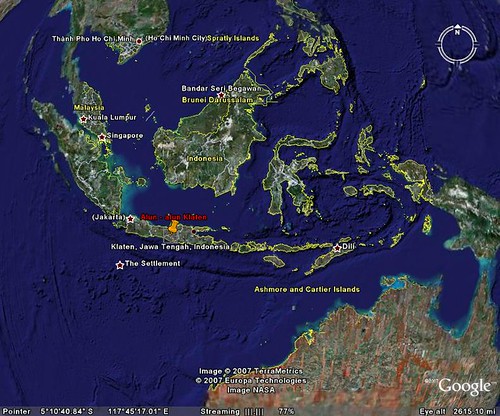Terrain (rupa bumi)
Terrain( rupa bumi)
From Wikipedia, the free encyclopedia

Terrain, or land relief, is the vertical and horizontal dimension of land surface. When relief is described underwater, the term bathymetry is used. In America, topography has recently become an additional synonym, though in many parts of the world it retains its original more general meaning of description of place.
Terrain is used as a general term in physical geography, referring to the lie of the land. This is usually expressed in terms of the elevation, slope, and orientation of terrain features. Terrain affects surface water flow and distribution. Over a large area, it can affect weather and climate patterns.
Importance
The understanding of terrain is critical for many reasons:
· The terrain of a region largely determines its suitability for human settlement: flatter, alluvial plains tend to have better farming soils than steeper, rockier uplands.
· In terms of environmental quality, agriculture, and hydrology, understanding the terrain of an area enables the understanding of watershed boundaries, drainage characteristics, water movement, and impacts on water quality. Complex arrays of relief data are used as input parameters for hydrology transport models (such as the SWMM or DSSAM Models) to allow prediction of river water quality.
· Understanding terrain also supports on soil conservation, especially in agriculture. Contour plowing is an established practice enabling sustainable agriculture on sloping land; it is the practice of plowing along lines of equal elevation instead of up and down a slope.
· Terrain is militarily critical because it determines the ability of armed forces to take and hold areas, and move troops and material into and through areas. An understanding of terrain is basic to both defensive and offensive strategy.
· Terrain is important in determining weather patterns. Two areas geographically close to each other may differ radically in precipitation levels or timing because of elevation differences or a "rain shadow" effect.
· Precise knowledge of terrain is vital in aviation, especially for low-flying routes and maneuvers (see terrain collision avoidance) and airport altitudes. Terrain will also affect range and performance of radars and terrestrial radio navigation systems. Furthermore, a hilly or mountainous terrain may strongly impact the implementation of a new aerodrome and the orientation of its runways.
Geomorphology
Geomorphology is in large part the study of the formation of terrain or topography. Terrain is formed by intersecting processes:
· Geological processes: migration of tectonic plates, faulting and folding, volcanic eruptions, rivers.
Tectonic processes such as orogenies cause land to be elevated, and erosional or weathering processes cause land to be worn away to lower elevations.
Land surface parameters are quantitative measures of various morphometric properties of a surface. The most common examples are used to derive slope or aspect of a terrain or curvatures at each location. These measures can also be used to derive hydrological parameters that reflect flow/erosion processes. Climatic parameters are based on the modelling of solar radiation or air flow.
Land surface objects, or landforms, are definite physical objects (lines, points, areas) that differ from the surrounding objects. The most typical examples arelines of watersheds, stream patterns, ridges, break-lines, pools or borders of specific landforms.
